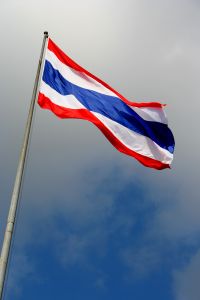Extended tourists’ stay in the island of Koh Samui, a
very likely possibility given its many attractions besides beaches, will mean a
prolonged exposure to one of the four major dialects spoken in Thailand. Southern
Thailand, where this tourist destination is located, is a melting pot of Thai
Chinese, Buddhists, and Muslims.
It is said that in venturing outside of the island’s
tourist areas, the locals who will be encountered speak with a thick southern dialect,
which can be hard to understand even for northern Thais. Hence, picking up a
few phrases in the local dialect can serve as one of the Koh Samui highlights
of a visitor enamoured to the island.
This southern Thai dialect is called
Paktay. It is generally spoken south of Prachuap province, and it is estimated
that 4.3 million Thais speak this dialect or approximately 8 per cent of the
country’s population. This dialect has several different varieties, with a very
striking contrast between the rural and the educated Paktay. Speakers of
standard Thai, the national language of Thailand, will more easily understand
educated Paktay than rural Paktay.
Thai-Lao
Dialects
A Koh Samui travel tour, which extends to central
Thailand will more or less enable such a comparison. The dialect spoken in this
part of the country is called Thaiklang, which is similar to standard Thai.
This dialect is more dominant than its southern counterpart. Among the
estimated 25 million standard Thai speakers, 14.4 million also speak Thaiklang.
Notably, standard Thai is the dialect spoken in the central part of Thailand.
Being the national language, standard Thai is used by the government and the
media.
The areas in the northernmost part of Thailand speak
kam muang or yuan, the northern Thai dialect. Essentially, these regions
include the Thai provinces north of Tak, Sukhotai, and Uttaradi. Roughly 4.8
million locals speak this dialect, or almost 9 percent of the Thai population.
Speakers of the northern Thai dialect can often understand standard Thai, which
is used in schools and in the media.
The northern dialect and standard Thai, however,
aren’t mutually intelligible. Isaan Thai is the dialect in northeastern
Thailand. It is actually a Lao dialect but has been heavily influenced by the
Thai language because of people-to-people contact among nearby regions. All
told, there are about 12.2 million Thai-Lao speakers, accounting for a little
less than 23 percent of Thailand’s population.

